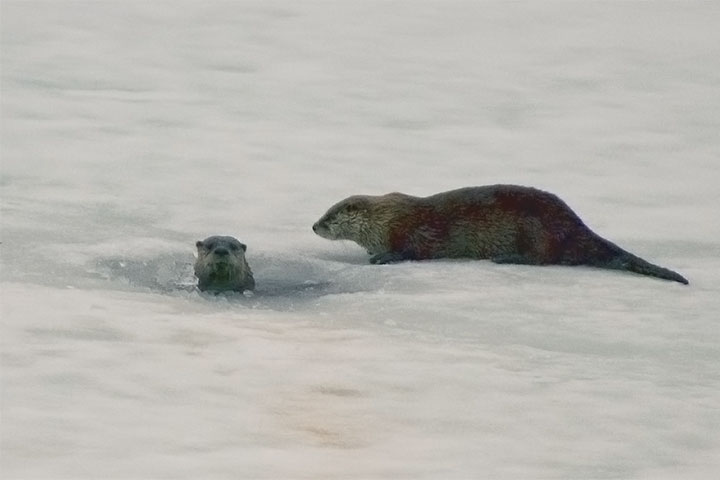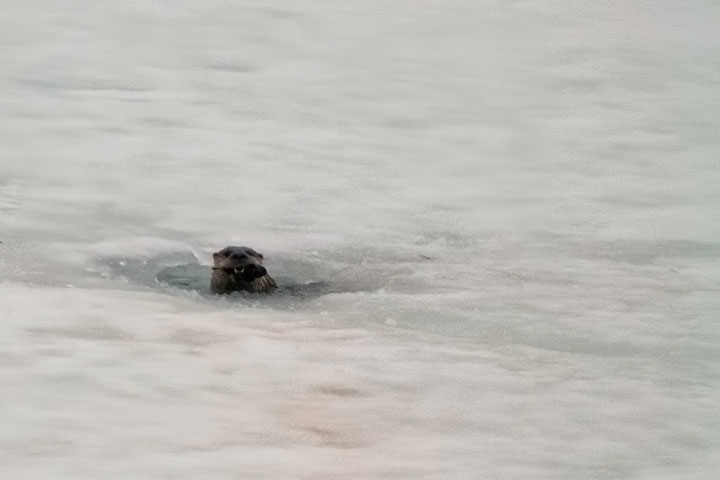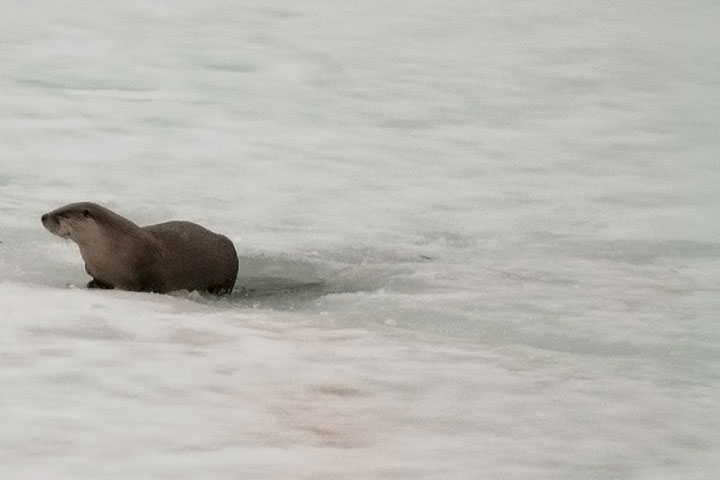Kootenay Lake (altitude 532 m) does not freeze over in the Winter. In the past, portions of the West Arm would sometimes freeze over, but that has not happened for a long time. The change had nothing to do with global warming. Rather it was the result of the upstream dams which maintained greater water depths during the coldest times of the year.
The Kootenay Lake website offers more pictures of local River Otters
Other lakes in the region do freeze over, especially the smaller, shallow ones at higher altitudes. On March 22, 2011, Nicole Tremblay took these pictures of River Otters at Summit Lake (altitude 763 m). The otters maintain a hole in the ice so as to gain access to the fish they eat (second picture).



Pictures by Nicole Tremblay used with permission.

Hi Alistair,
All due respect but the statement about Kootenay Lake and why it no longer freezes over since the early sixties and regularly earlier than that raises my antenna. First, if you accept global warming as a fact, then it has to be a contributor in some way. Second, how can an upstream dam keep water deeper than when there is no dam there? Shallower, yes. There is only so much water to fill the lake, dam or no dam. Also, from the placement of the ferry pilings along the North Shore, it suggests that the water is now shallower than ever before since they pretty much dry up and no boat could dock between February and May now if at any time since the lake is not very deep on the inhabited side between Nelson and Balfour.
I’m sure I am missing something and none of this is based on data just observation and logic.
Doug, mine was a minimalist remark—capture the essence but possibly not the subtleties. Granted global warming is a reality, but the behavioural shift in lake freezing seems to predate any significant warming. Rather, the behaviour better matches the transition in flow that took place following the building of the dams resulting from the Columbia River Treaty. Further there is good reason to believe that it should do so. The upstream dams are the primary mechanisms for controlling the flow in the Lake. By choosing when and how much water is released into the upstream rivers, they strongly influence depth and flow at all times of the year. The downstream dams and the other rivers and creeks that flow into the lake have an influence, but a lesser one. Surface freezing is most likely when the lake is shallow and has a low flow rate. By increasing both flow rate and water depth during the coldest months, the upstream dams have been, I believe, the primary source of preventing the West Arm from freezing over.
As to the pilings, all modern ones are shorter than they used to be. By exerting great control over the flow, the dams have trimmed the extremes: the low water is no longer as low; the high water is no longer as high. Indeed, that was a major motivation in building the dams.